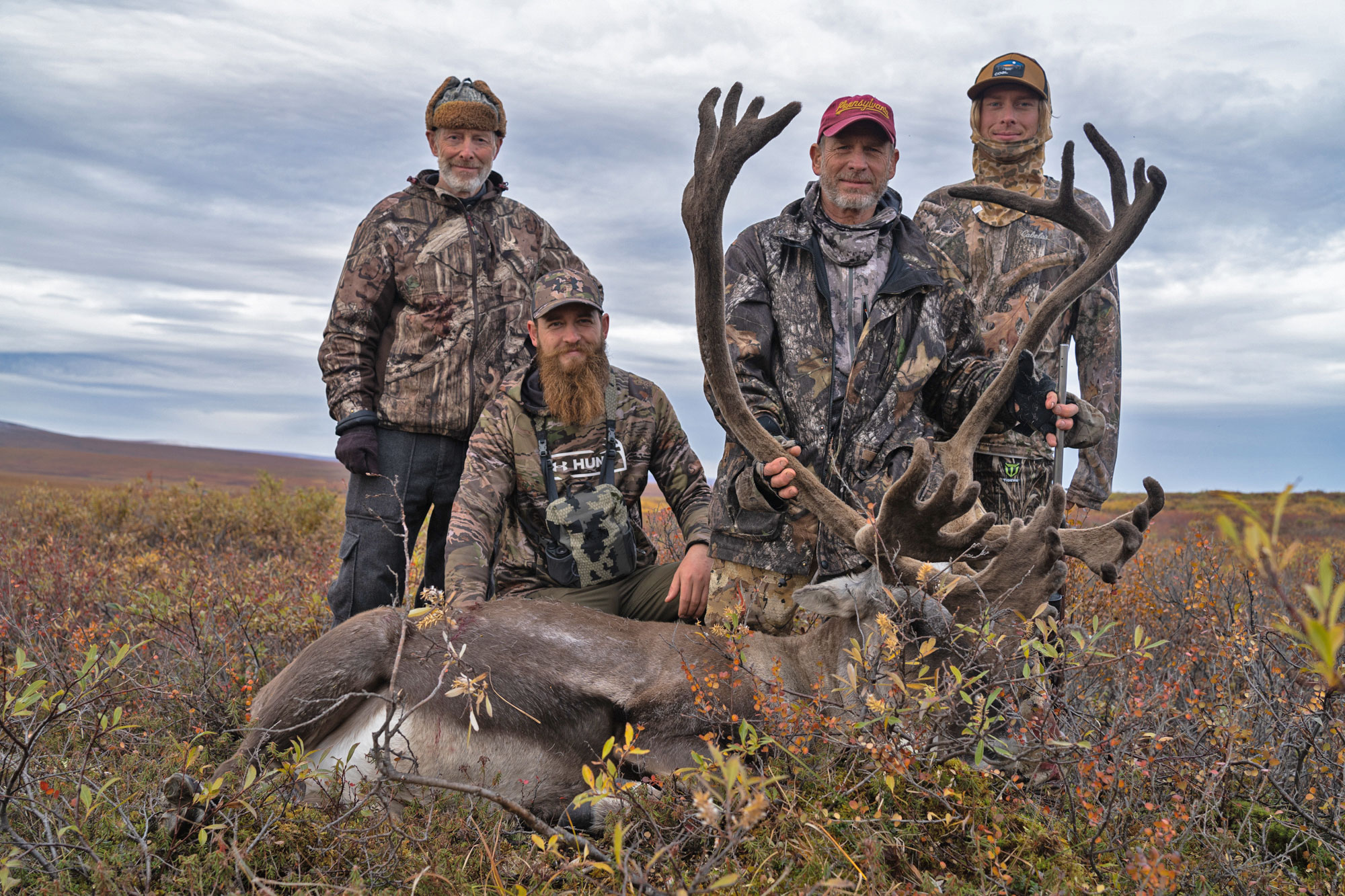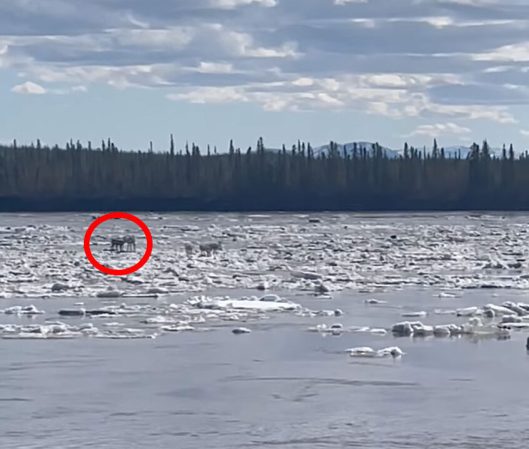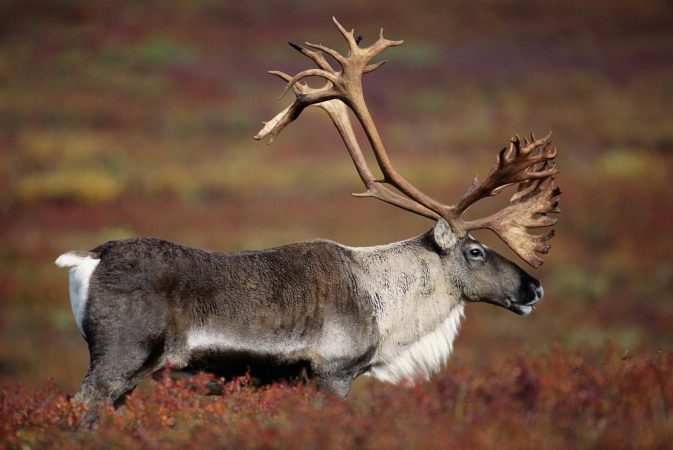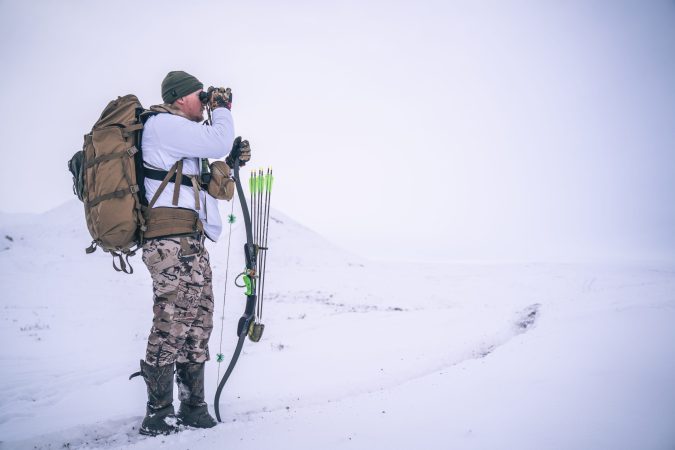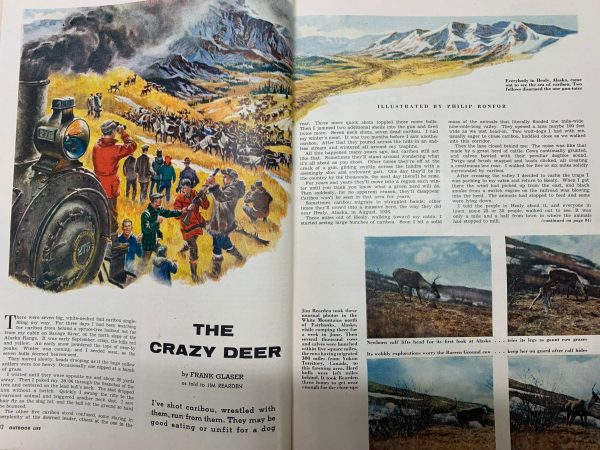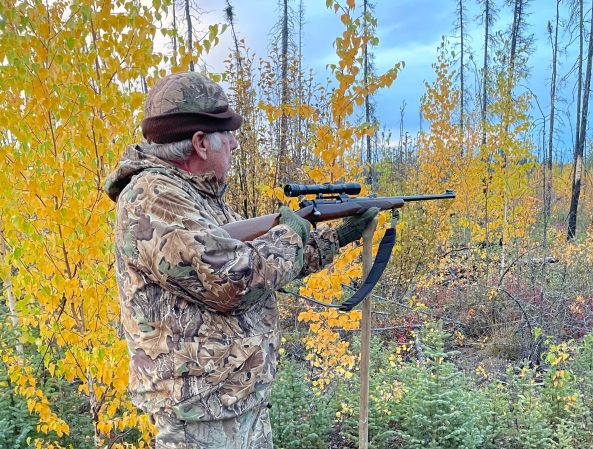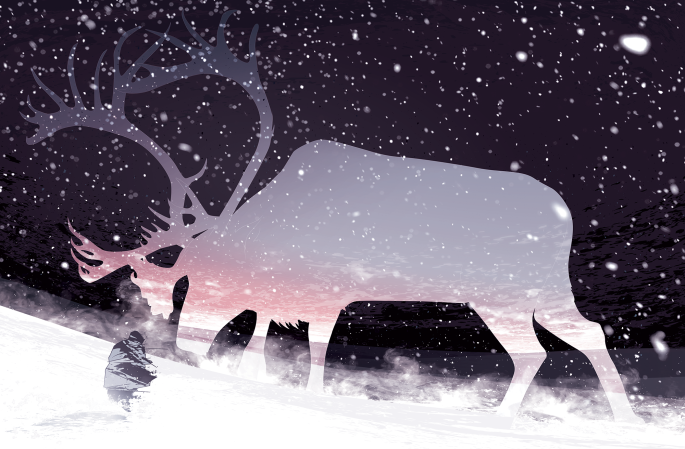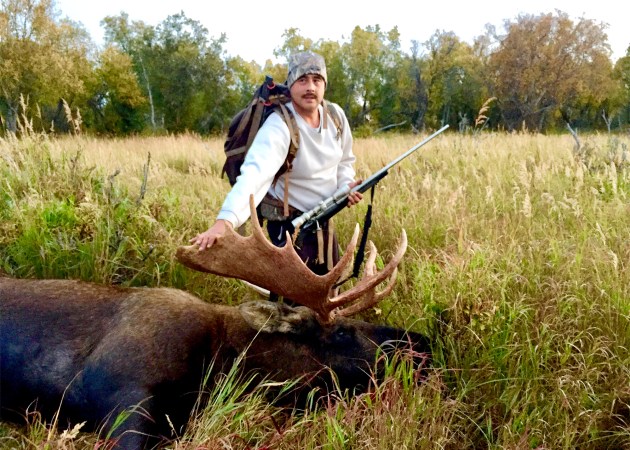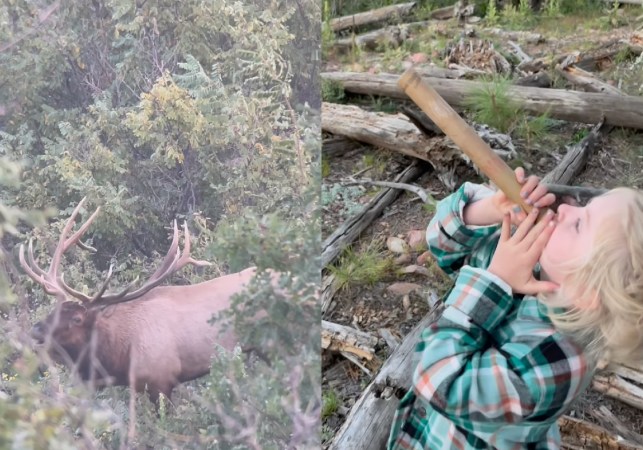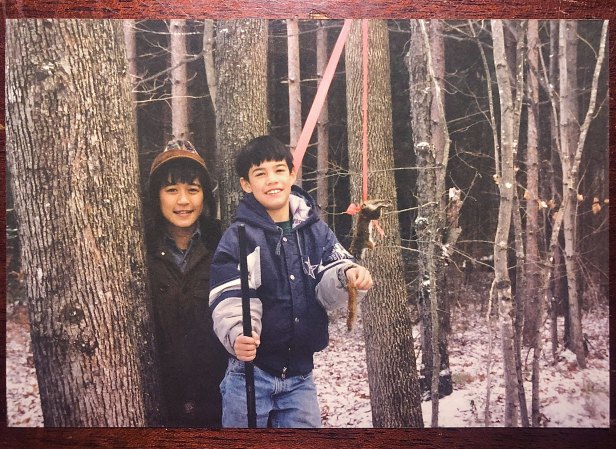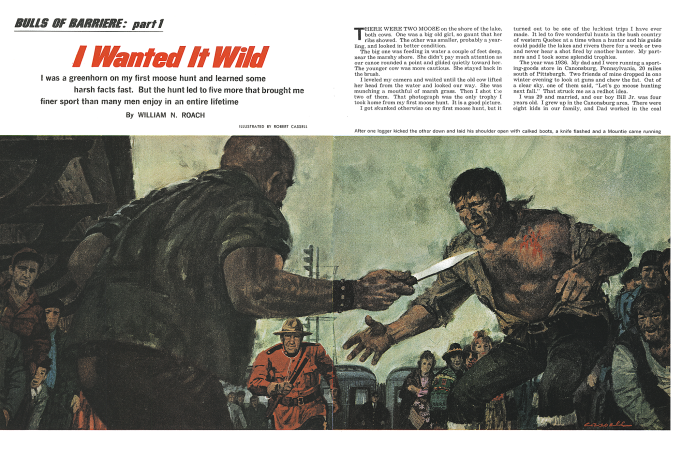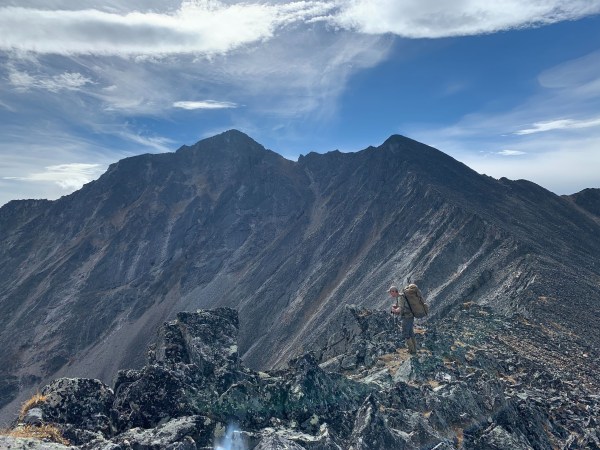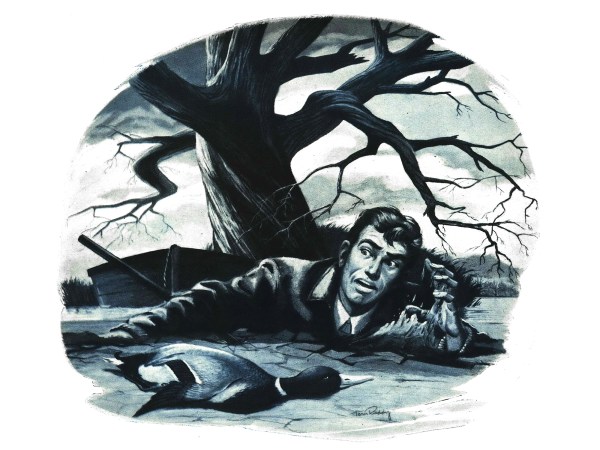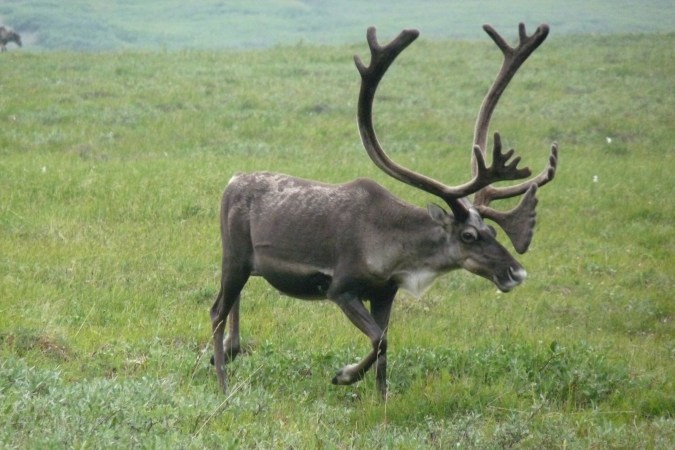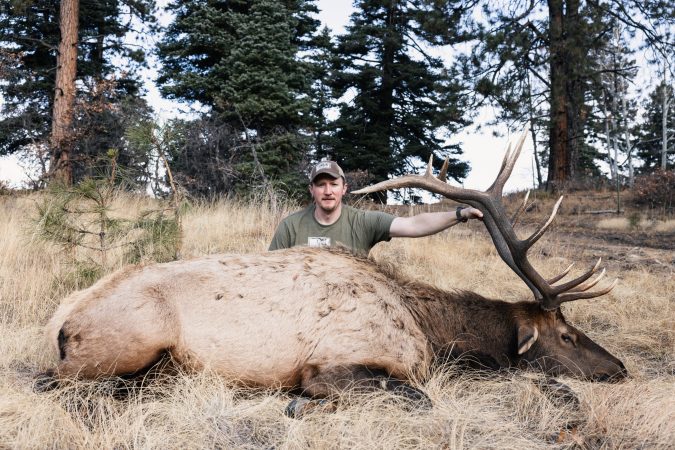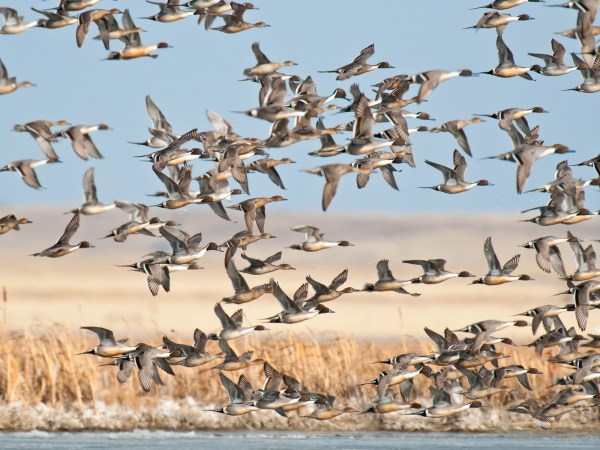With my own boys no longer tiny babies, I decided at the last minute in July that it was the year for an Alaskan adventure. Because so few people can manage to drop off the grid for 10-plus days with only a month’s notice, my circle of prospective partners was extremely small. But my longtime pal James Barkman was in with very little cajoling.
James and I have nursed a dream in which we took our fathers along on an epic adventure. Was an Alaskan DIY caribou hunt the one? We mentioned the idea to our fathers, and both said they were confident they would have no problem with the physical demands of the trip. The new team was set: four men, two in their 20s and two in their 60s. Ervin and James had never met my dad, Enos. None of us had ever hunted in the Alaskan tundra. None of us had ever hunted for caribou.
This mission was completely unsupported. No guides, outfitters, transporters, or bush pilots. Over-the-counter Alaskan caribou bull tags for an area 100 miles north of the Arctic Circle in the vast treeless tundra above the Brooks Range. We intended to fly into Fairbanks, rent a truck, drive nine hours north on mostly gravel roads, park, hike in 6-plus miles across the tundra, set up a camp, kill four bull caribou, inflate tiny Alpacka pack rafts and float the gear and meat back out to the truck on rushing, glacier-fed rivers.
Into the Northcountry
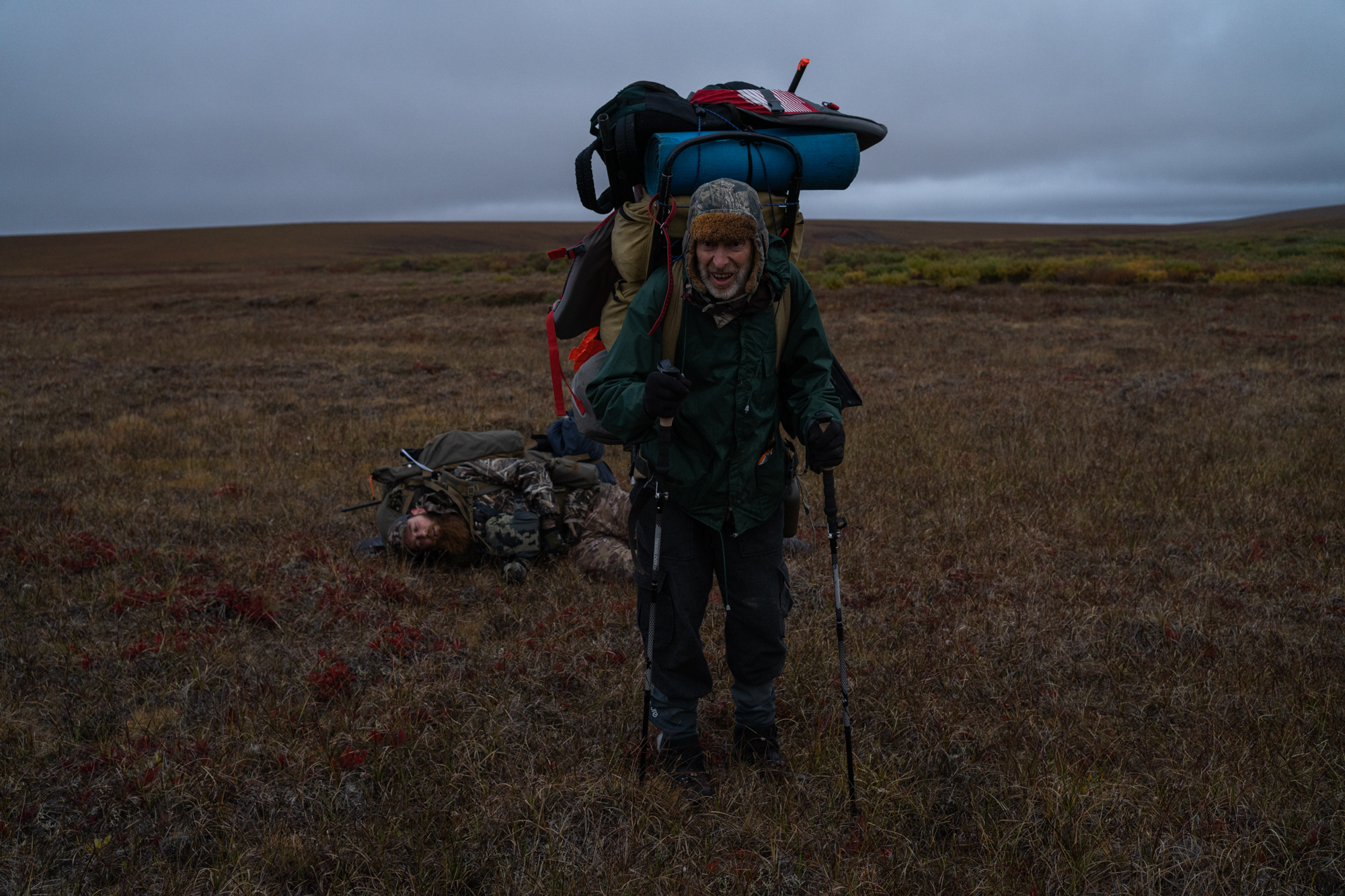
We flew into Fairbanks late Sunday night and started driving right away, reaching our spot Monday morning. Low cloud cover and some rain. We did a gear dump, and assembled our packs. Mine weighed 92 pounds. We set out across the tundra, reaching a large river that we couldn’t wade, so we inflated our rafts and crossed it. We continued hiking. Thick alders, deep muskeg, boulders, and big fresh grizzly tracks kept things interesting. As the afternoon wore into evening, the group, especially the “older” members (Ervin prefers “older” to “old”) began to slow down. Our dads were absolutely crushing it, and most men their age would never have made it this far, but everyone has their limits. As night began approaching, we decided to set up a temporary camp and get some rest. Everyone was exhausted. I had slept only three of the preceding 44 hours.
The next morning James and I pushed on alone with a load of gear to scout our base camp. We discovered a great spot nestled between the river and a large rocky outcropping. After returning to get our dads and the rest of the gear, “Blueberry Camp” was operational by mid-afternoon. That evening we hiked up the tundra slope behind camp to glass the region. We could see miles in all directions. No caribou. And then, on a distant mountain, we saw specks that moved through our binoculars. Caribou. James and I decided to set off helter-skelter across the vast tundra to intercept these animals. We got within a mile when fog rolled in and visibility dropped to zero. We slogged back to camp, reaching the tents around dark at 11pm.
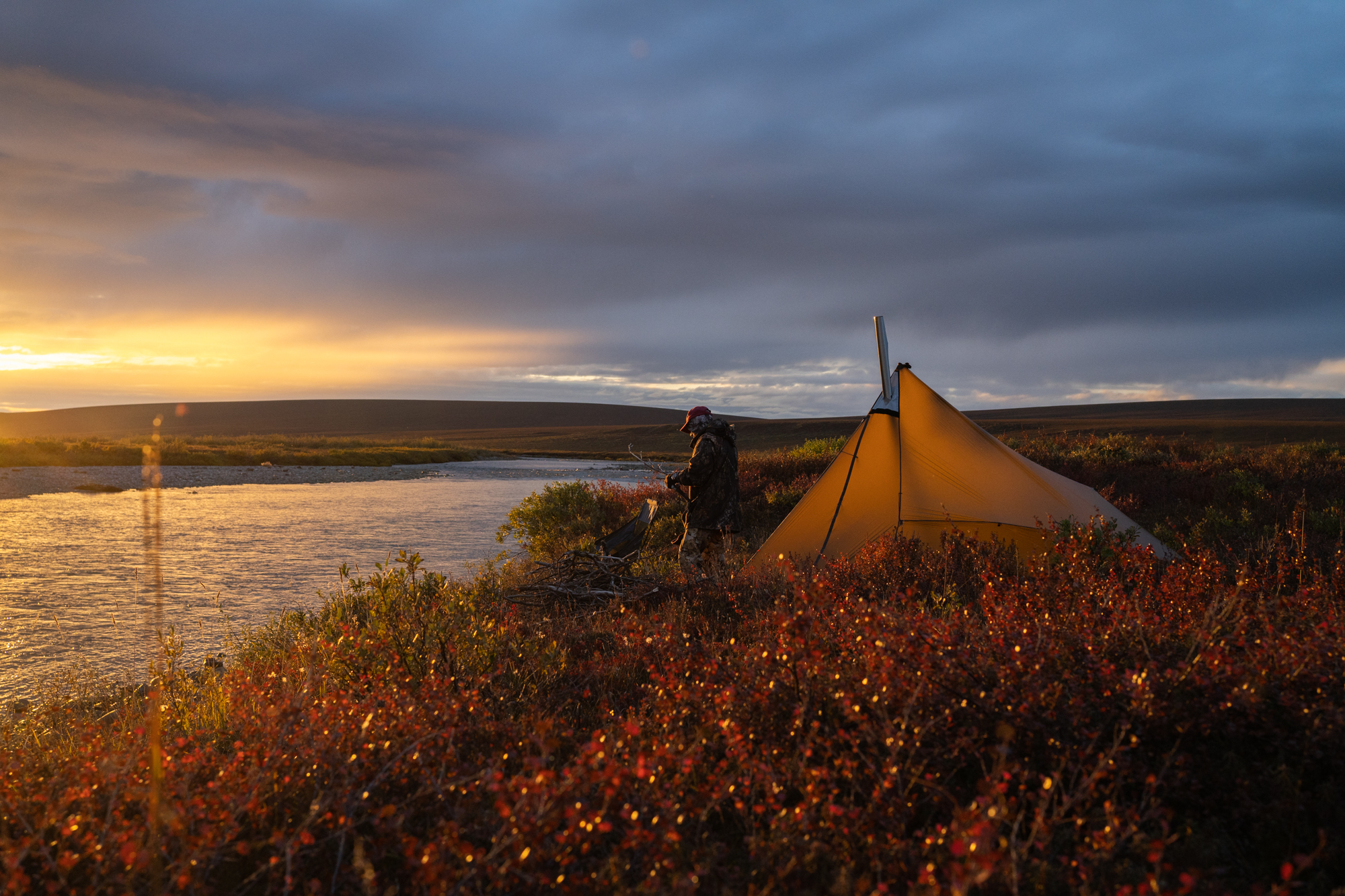
The next day, we decided to split up. James and Ervin would glass the tundra while Dad and I would hunt upriver. We planned to take our rafts and float back to camp. Dad and I hiked upriver all afternoon. We saw grizzly, wolf, caribou, moose, muskox, and ptarmigan tracks in the sand. But no caribou. That evening, as we were inflating our rafts for the journey back to camp, I saw movement on the tundra behind us. A second look confirmed a solitary caribou only a quarter mile away. It had been bedded in the willows near the river and was now cruising along the tundra. After five seconds of strategizing, Dad and I left the rafts and started after the caribou with only guns and binoculars in hand. The bull was making good time in the tundra, paralleling the river. We were running but not gaining ground. After another hurried discussion, Dad told me to try to catch up to the bull.
I set some sort of tundra sprint record for the next quarter mile, and eventually got even with the caribou. He was trotting along the tundra, and I was down in the willows. I stopped to catch my breath and had one of the most intense extrasensory experiences of my life. My subconscious screamed, “He’s going to come down to the river!” I don’t know why I had that feeling, but I trusted it and dropped to the ground with my gun resting on a tussock. Five seconds later the bull stopped, turned, and came cruising down off the tundra and into the willows. Straight at me. He disappeared for a moment while he crossed a creek and I could hear him splashing through it. Seconds later he popped into view, only 150 yards away. He turned broadside and I fired. I could not believe it: we had a caribou down.
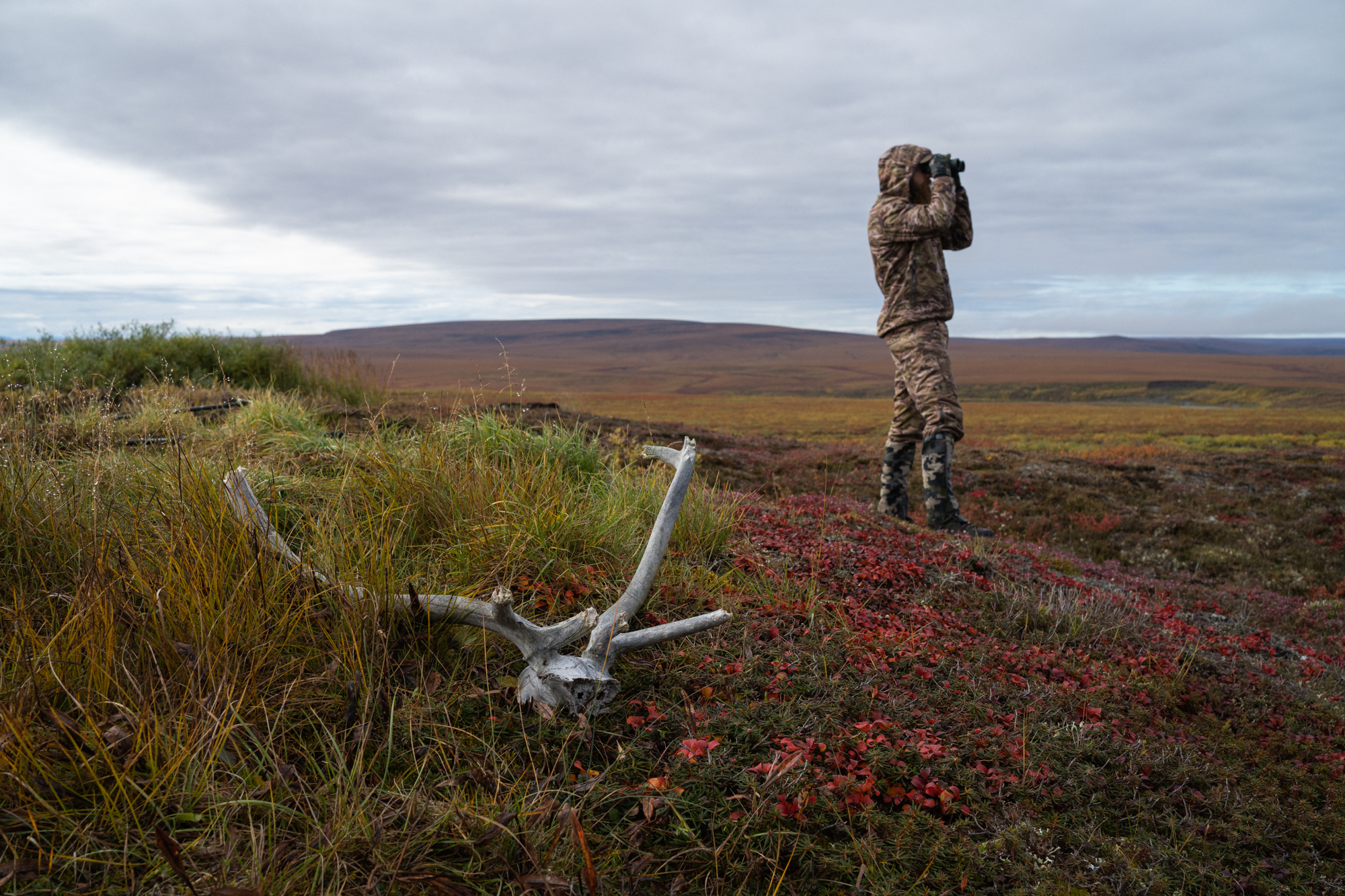
Dad joined me as we walked up to the beautiful, light-colored caribou bull and shared a moment for the ages. But there was work to do. It was getting dark and we were miles from camp. After a few photos, we raced back to our rafts, floated the half mile downriver to get as close as possible to the caribou, and returned to it with empty packs. As we butchered the caribou, the black flies smelled blood and came by the thousands. The intensity of their attack felt coordinated. My hands were their main focus and they bit down with a vengeance.
The mental load of doing a hard task with limited time and a cloud of bugs can’t be overstated. We loaded our packs with the meat and hiked back to the river. Then we transferred the meat to the rafts and headed downriver as the sun set. We were now floating down a glacier-fed Arctic river, in early darkness, loaded with meat. This was our first time floating this river, and really our first time using these rafts. What ensued was several hours of high adventure that culminated with the final rapids above camp. It was now fully dark, and I couldn’t see the rocks early enough to avoid them. I hit a big one, and my pack launched into the river. I floated into camp, paddling with one hand, and holding my submerged pack with a tight grip on the velvet covered caribou antlers strapped to the frame.
Father Time
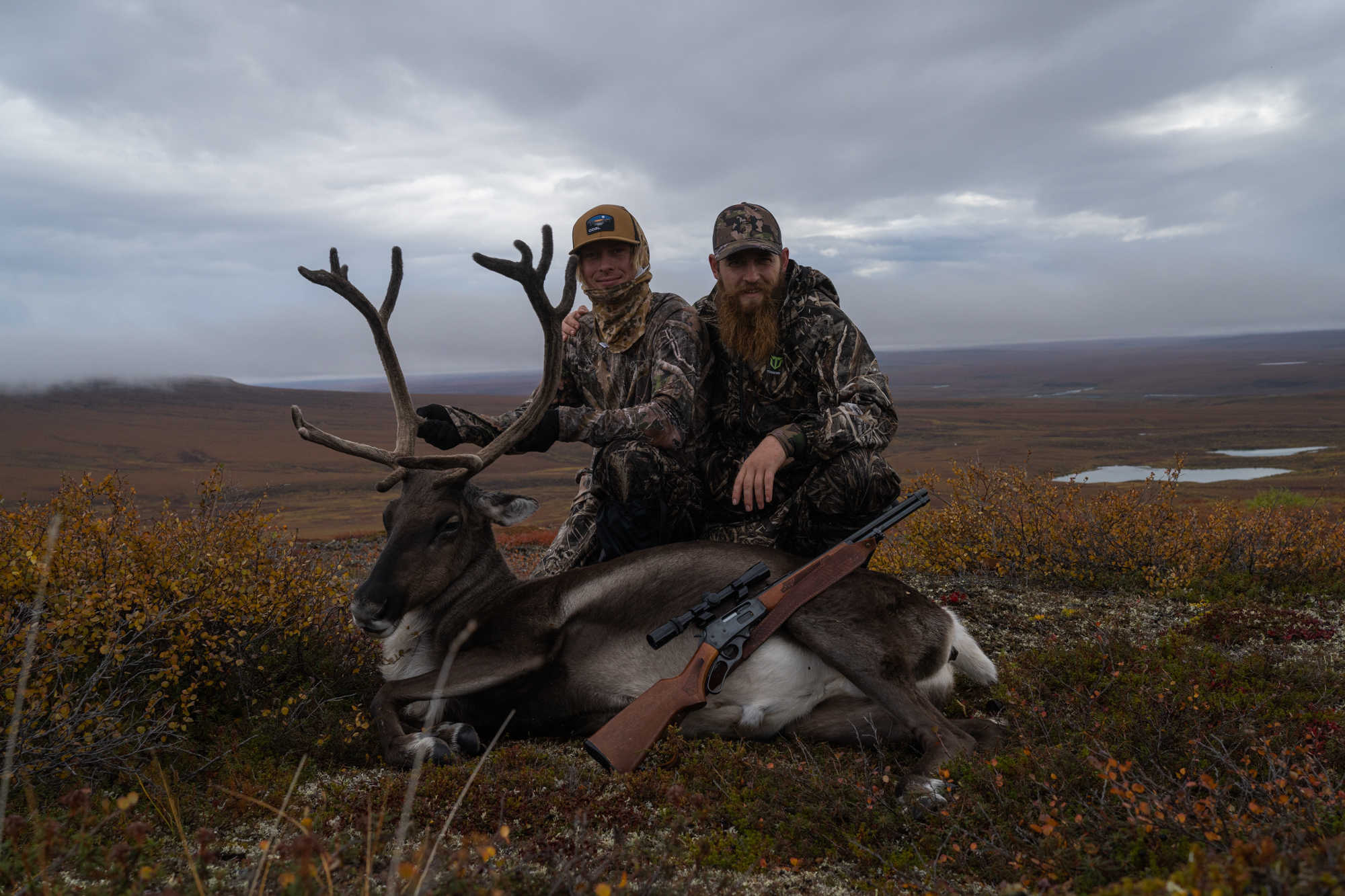
It snowed that night. The next day we ate caribou backstraps for breakfast, celebrating the knowledge that we would not be going home empty handed. James and I decided to hunt together, while the dads headed back upriver. We glassed up a big group of caribou on a mountain about two and a half miles away. I was still pretty exhausted from the day before, but James wanted to attempt a stalk and I was game to try it. We made good time across the tundra and got to the mountain where we had last seen the caribou. As we climbed, fog rolled in. But suddenly I saw James’ body freeze. He motioned ahead. Sure enough, peaking out of the fog were antler tips. James snuck a little closer, and I heard the crack of his .30-30 and the “wump” of the bullet making contact. Another beautiful caribou. Just as we got to the bull, the fog lifted. Then the clouds lifted, too, and the sun broke through. As far as we could see the tundra and lakes were lit up by the evening sun. We took quite a few photos in the stunning moment.
A long, long slog through the tundra under heavy packs ensued. Trying to navigate this soggy, unstable terrain with weighted packs was like walking across a shallow swimming pool full of frozen footballs. After gushing about our success our dads reported that a sow grizzly and her two cubs were eating my caribous gut pile just a short way upriver.
We now had two bulls down. The boys were tagged out and the dads were now the only hunters in camp. The next day, Friday, we decided to take it a little easier. It had been nothing but day after day of late nights and hard work, and we were getting pretty gassed. James and I fished upriver and caught a handful of beautiful arctic grayling for supper. Dad hunted the river and Ervin glassed from our lookout. That night when we returned to camp Ervin had exciting news. He had seen a herd of 16 caribou, including some monster bulls. They were only a mile or two from camp. We were hopeful that they would still be around the next morning.
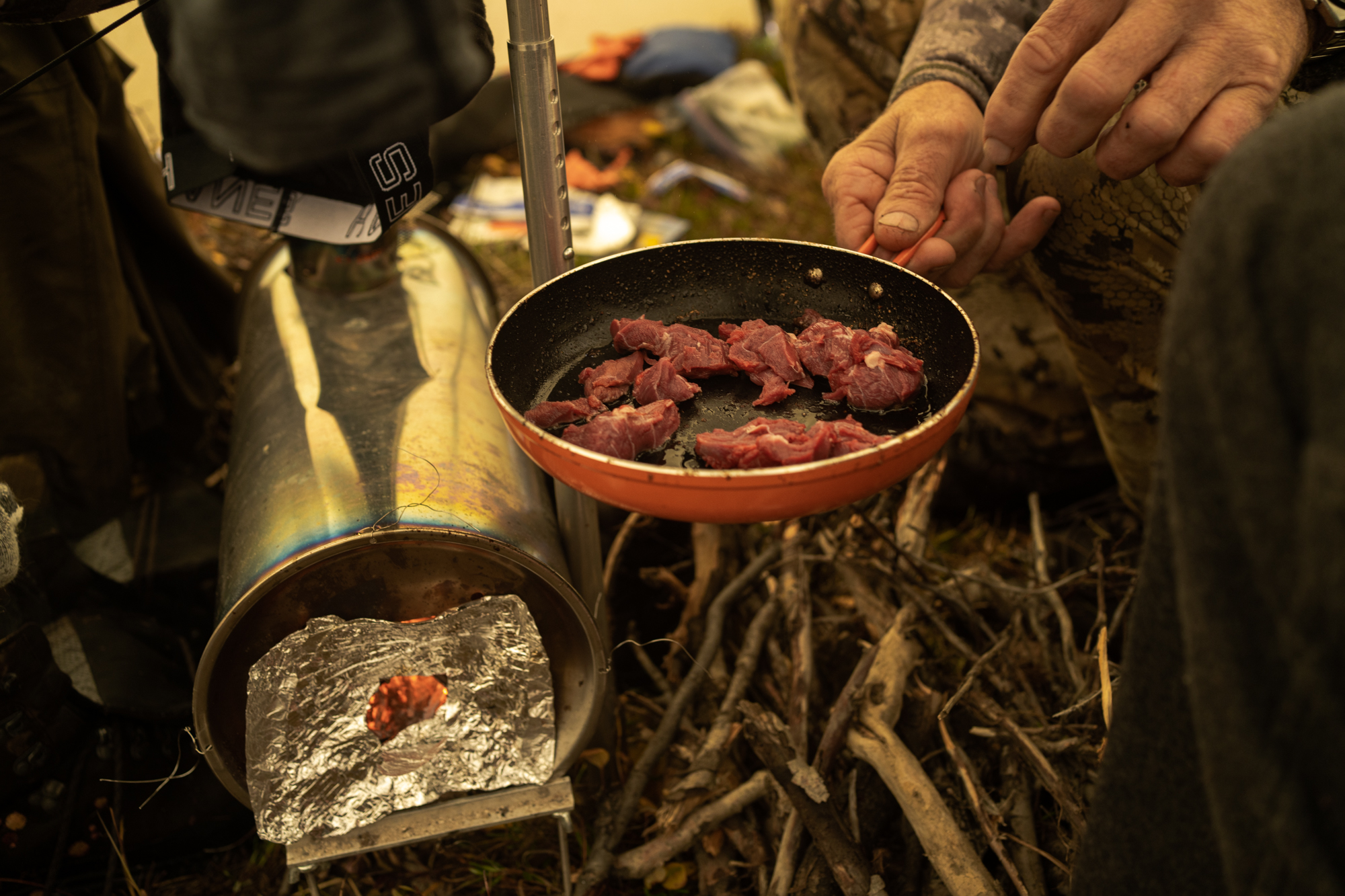
The next day dawned cold and clear. We headed out early and were able to find the bulls right away. There was a group of three, and as they crested a distant ridge we decided to try a stalk. All four of us stayed together and hiked to the ridge where we had last seen the bulls. Carefully, with the wind in our face, we crested the ridge. Nothing. No bulls to be seen. We kept pushing forward, glassing in all directions. Suddenly, James spotted their antlers only a few hundred yards away. They were bedded in a creek bottom, just below our line of sight. We crawled forward and set up exactly 200 yards from the bulls.
Ervin and Dad were sitting only a few feet apart, their guns on trekking poles fashioned into shooting sticks. As Ervin had spotted this group, he got dibs. The bulls were also only a few feet apart from each other. Bedded down, they would occasionally lay their heavy antlered heads completely sideways on the ground. We waited for them to stand. And waited. After 15 minutes, we started getting cold. We attempted to get them to stand by making loud bellowing noises. They didn’t care, just kept sleeping. Finally, both bulls stood up and started walking away. Every step they took was adding yardage. We had planned to count down for the shot, but when the count ended, only Ervin’s was broadside. He shot, and then dad shot. We still haven’t fully deconstructed what transpired over the next few seconds. What we know for sure is both men had their bulls down within 20 seconds or so. The third bull circled us to get our wind and determine what was causing all the ruckus. He pranced over the tundra as if it were a polo green, with light lilting steps.
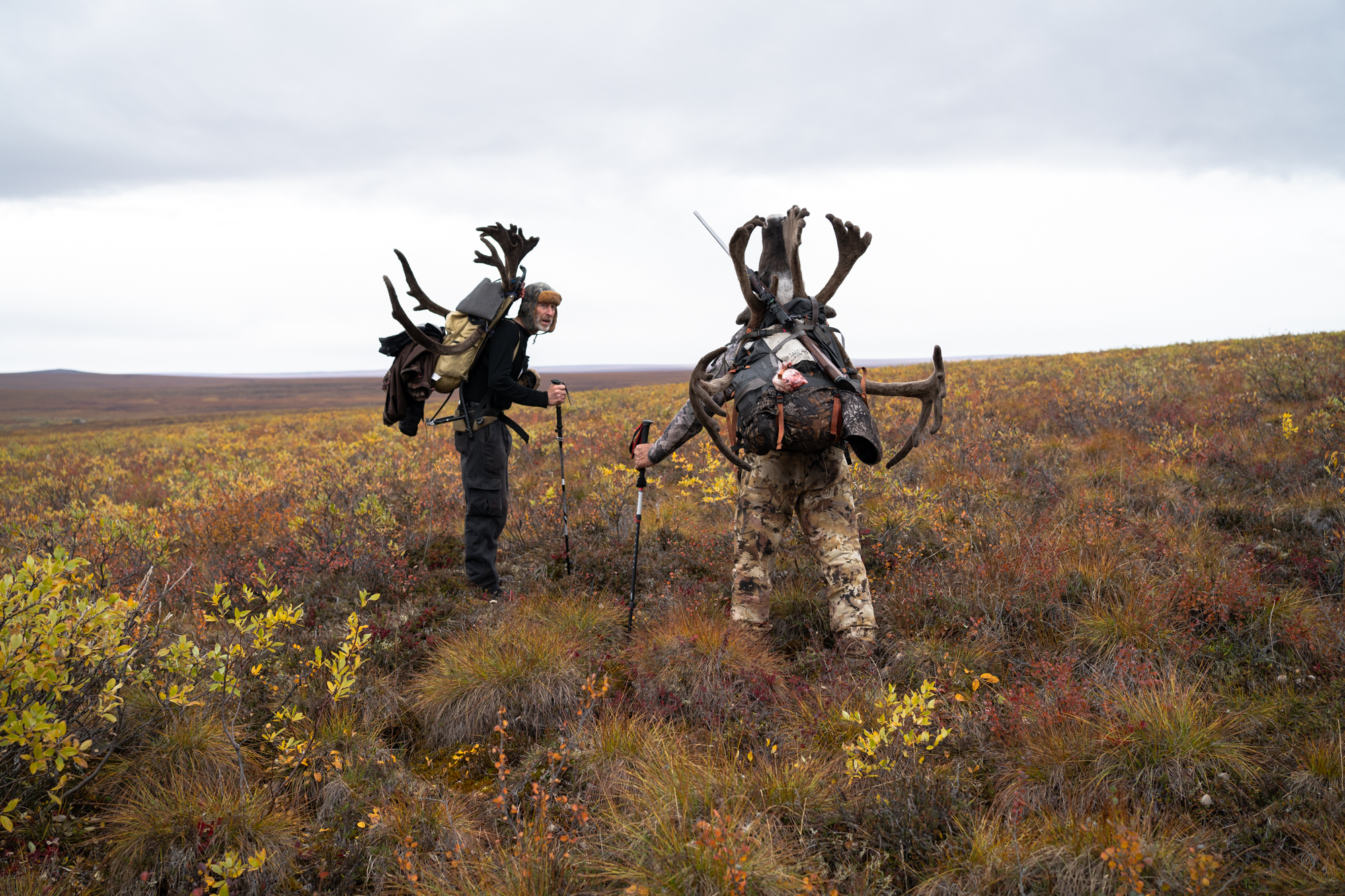
This moment of two sons watching their two dads harvest two big caribou bulls will be forever etched in my mind. It was the apex of the hunt, the peak of the crescendo of action and emotion that had gotten us to that point. We approached the bulls and gazed at their tall, sweeping antlers. Creatures of the tundra, they belonged there. We were humbled to be able to take part in this ancient ritual of Arctic hunters and prey.
The Float-Out
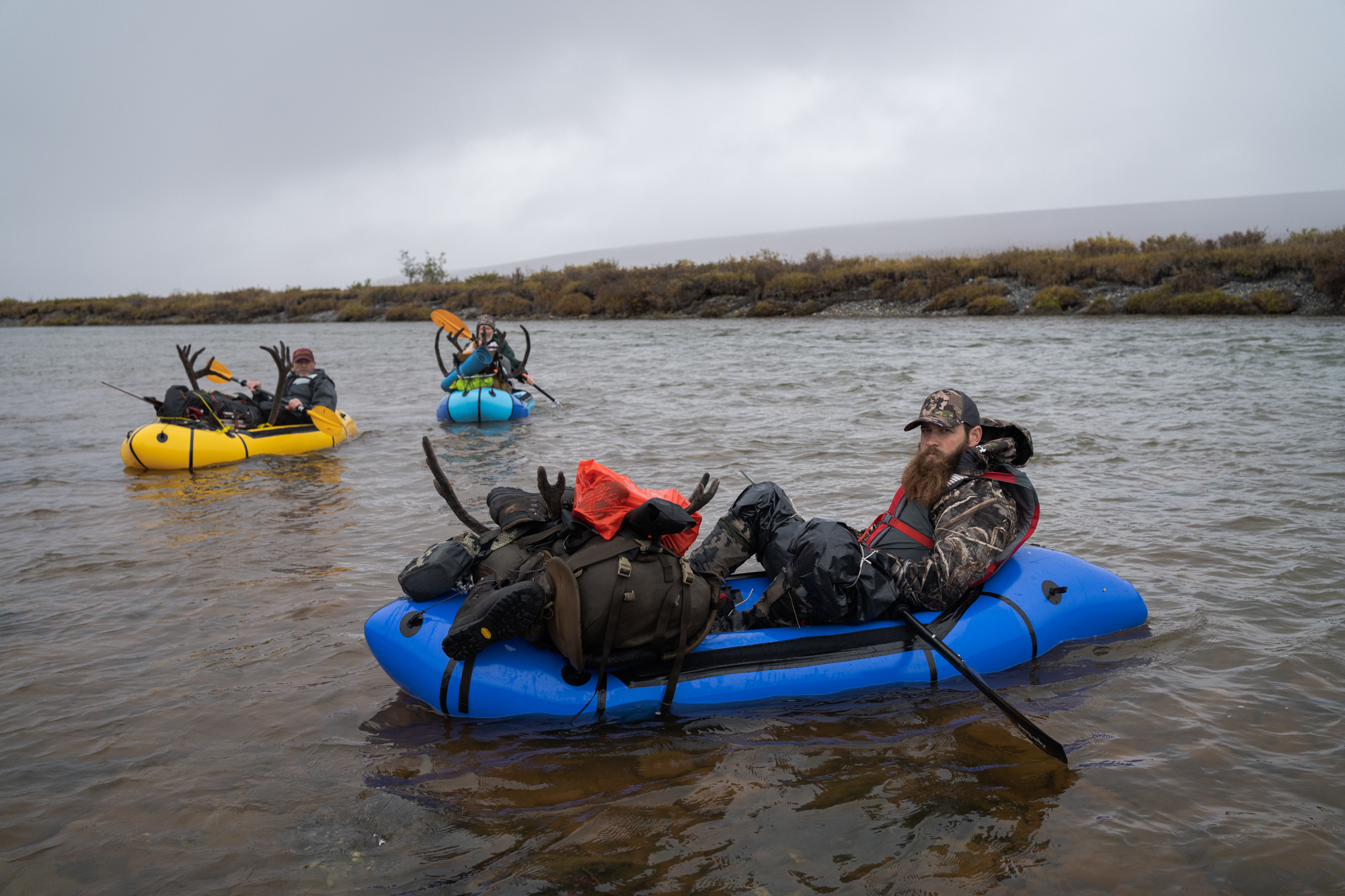
We now had meat and lots of it. The pack back to camp with two large caribou was a tough one, but by this point in the trip we were getting used to it. We celebrated at Blueberry Camp by making a series of delicacies on our Jetboil, including James’ “Blube Juice,” a creation of melted caribou fat and blueberries. I followed that with a beautiful roast wrapped in caul fat. The next day was a rest day. We ate. We reflected. We relaxed. We fished.
Float-out dawned rainy and overcast. We broke camp and carefully loaded each raft. Dad took the lead, followed by me, Ervin, and James. Heavily loaded, we picked our way down each rapids as best we could but everybody was taking on water. The caribou meat was in game bags at the bottom of the rafts, and as water sloshed into the rafts it was tinged with red. Before long we were all enjoying a caribou blood bath in our rafts.
READ NEXT: A Caribou Hunting Adventure in Alaska, No Guides Required
Our small river joined a big river. This big river flowed straight north into the Arctic Ocean. The rain was now blowing off the Arctic Ocean and straight into our teeth. It was cold. Finally, we arrived back at the gravel road where we had parked our truck. Shivering, with hands that were unable to perform the simplest tasks, we huddled around the truck’s heaters. After a few minutes, we limbered up enough to deflate the rafts, pack the gear, and head south down the long, long gravel road that we had driven up.
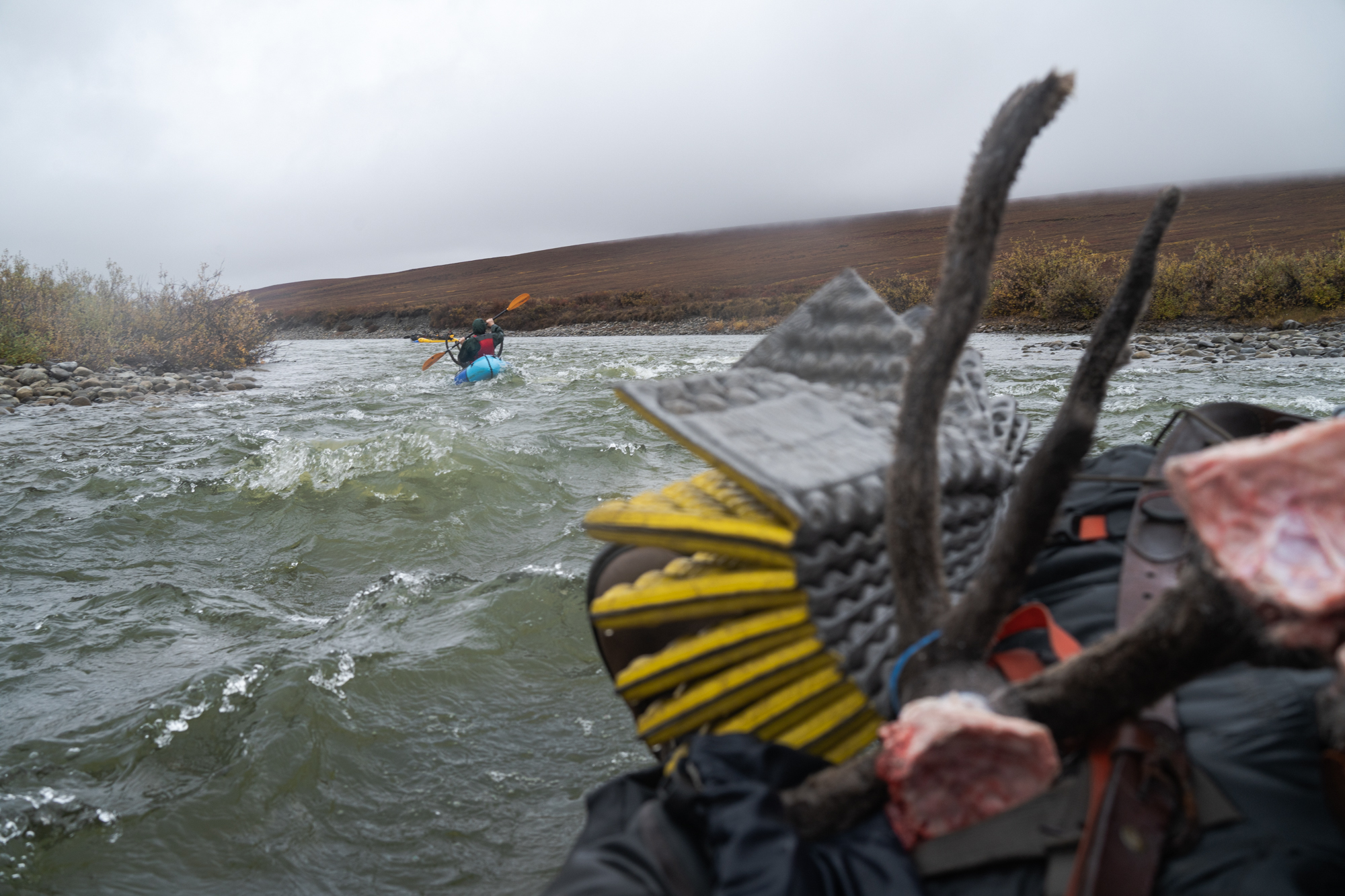
As we drove, our conversation flowed, recounting the events of the trip. The unending stream of grueling work but also incredible success was a lot to process. We decided on a statement that summarized the trip: “Everything worked, but nothing was easy.”
During our entire hunt, we saw no people. We were alone on the tundra, and the wildness of this adventure was as unmatched as the company.
